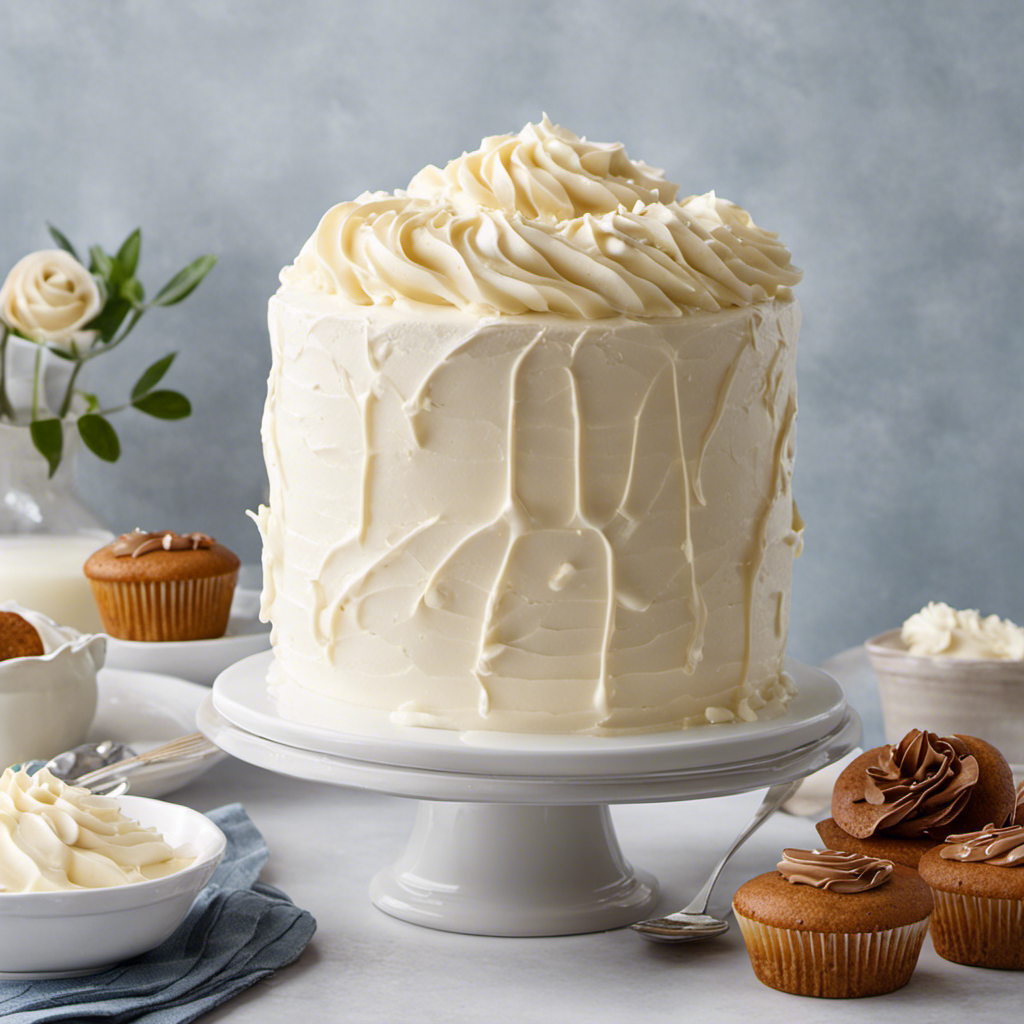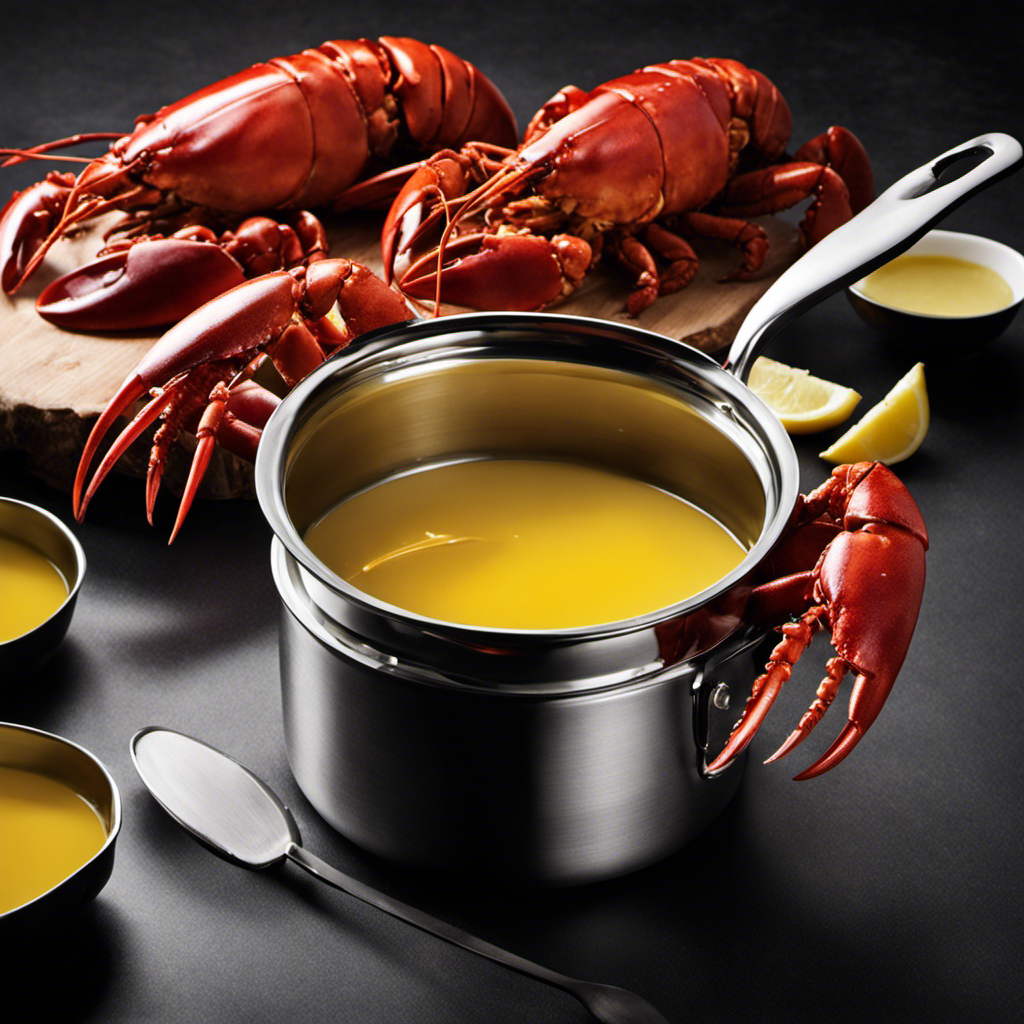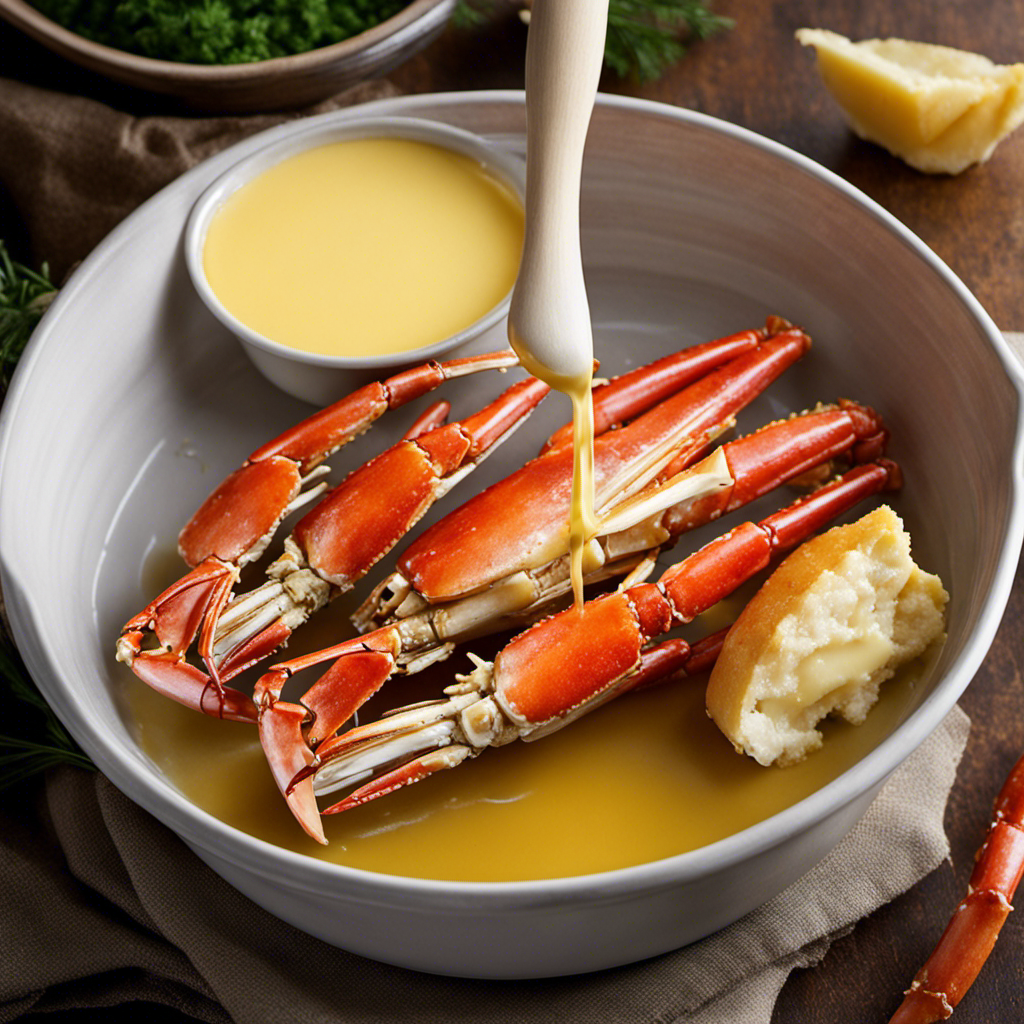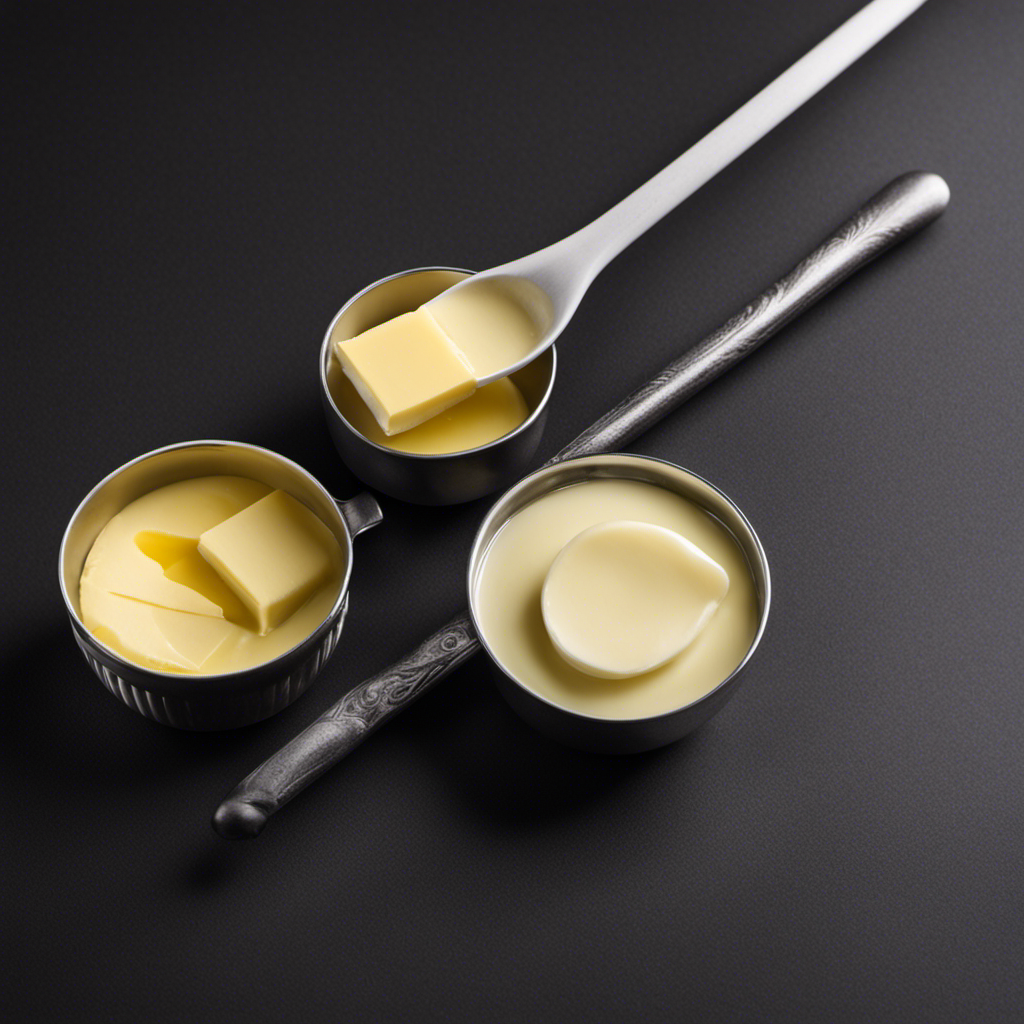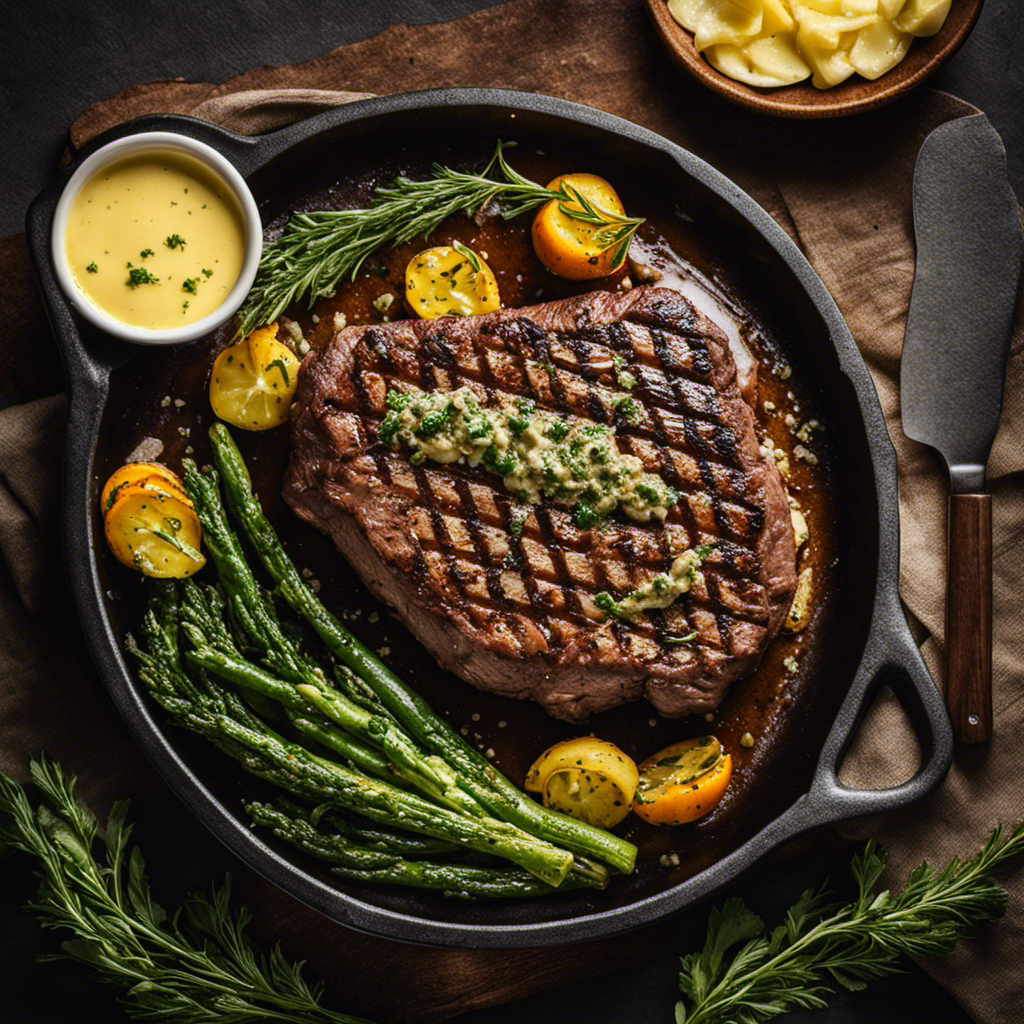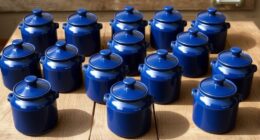I have always had a strong craving for sweets, but being lactose intolerant has made it difficult to find a tasty frosting recipe.
So, I set out on a mission to create a mouthwatering frosting without butter or cream cheese. And let me tell you, folks, I’ve cracked the code!
In this article, I’ll share alternative ingredients, vegan recipes, dairy-free options, and even some creative flavors that will make your taste buds dance.
Get ready to indulge in the most delectable frosting you’ve ever tasted, minus the dairy!
Key Takeaways
- Alternative ingredients for frosting include coconut cream, avocado, honey, maple syrup, cashews, and aquafaba.
- Vegan frosting recipes can be made using coconut cream, cashews, avocado, or aquafaba.
- Dairy-free frosting options include coconut cream, cashews, avocado, and aquafaba.
- Whipped coconut cream or whipped aquafaba can be used for a light and fluffy texture in dairy-free frosting.
Alternative Ingredients for Frosting
If you’re looking for a delicious frosting alternative, there are plenty of options that don’t involve butter or cream cheese.
One great option is using gluten-free frosting alternatives. Instead of using butter or cream cheese, you can use ingredients like coconut cream or avocado. These alternatives not only provide a creamy texture but also add a unique flavor to your frosting.
Another option for a healthier frosting is to go for low sugar frosting options. You can use natural sweeteners like honey or maple syrup instead of refined sugar. These sweeteners not only reduce the sugar content but also add a touch of natural sweetness to your frosting.
Vegan Frosting Recipes
You can try using coconut milk and powdered sugar to create a creamy and delicious vegan frosting. It’s a great alternative for those who follow a vegan diet or have dairy allergies. There are many other vegan frosting techniques and homemade frosting alternatives that you can explore. Here is a table showcasing four different vegan frosting recipes:
| Frosting Recipe | Ingredients | Instructions |
|---|---|---|
| Coconut Cream Frosting | Coconut cream, powdered sugar, vanilla extract | 1. Place coconut cream in the refrigerator overnight. 2. Whip the chilled coconut cream until fluffy. 3. Gradually add powdered sugar and vanilla extract. 4. Continue whipping until smooth and creamy. |
| Cashew Frosting | Cashews, water, dates, vanilla extract | 1. Soak cashews overnight. 2. Drain and rinse cashews. 3. Blend cashews, water, dates, and vanilla extract until smooth. |
| Avocado Frosting | Avocado, cocoa powder, maple syrup, vanilla extract | 1. Mash avocado until smooth. 2. Add cocoa powder, maple syrup, and vanilla extract. 3. Mix until well combined. |
| Aquafaba Marshmallow Frosting | Aquafaba (chickpea brine), cream of tartar, powdered sugar, vanilla extract | 1. Whip aquafaba and cream of tartar until stiff peaks form. 2. Gradually add powdered sugar and vanilla extract. 3. Continue whipping until thick and fluffy. |
These vegan frosting recipes offer a variety of flavors and textures, ensuring that you can find the perfect frosting for your cakes, cupcakes, or cookies. Experiment with different ingredients and ratios to create your own unique vegan frostings. Enjoy the process of making homemade vegan frosting and delight in the delicious results!
Dairy-Free Frosting Options
There are several delicious dairy-free options for frosting, such as coconut cream, cashews, avocado, and aquafaba. These alternatives not only provide a creamy texture but also add unique flavors to your desserts. Here are some options to consider:
-
Coconut cream: Made from the thick part of coconut milk, it creates a rich and velvety frosting that pairs well with tropical flavors.
-
Cashews: Soaked and blended cashews create a smooth and creamy frosting with a subtle nutty taste.
-
Avocado: Mashed avocado adds a creamy and buttery texture to your frosting, while also providing healthy fats.
-
Aquafaba: The liquid from canned chickpeas can be whipped into a light and fluffy frosting, similar to meringue.
With these nut-based and fruit-based frosting options, you can enjoy delicious dairy-free treats that are equally satisfying.
Now, let’s explore some whipped frosting variations.
Whipped Frosting Variations
To achieve a light and fluffy texture for your dairy-free frosting, try incorporating whipped coconut cream or whipped aquafaba.
These whipped frosting techniques are perfect for those who are looking for low fat frosting options.
Whipped coconut cream is made by refrigerating a can of full-fat coconut milk overnight, then scooping out the thick cream and whipping it until it becomes fluffy. This vegan alternative provides a rich and creamy base for your frosting.
On the other hand, whipped aquafaba is the liquid from canned chickpeas that is whipped until it forms stiff peaks. It may sound unconventional, but this magical ingredient creates a light and airy frosting that is both delicious and dairy-free.
Creative Flavors for Butter and Cream Cheese-Free Frosting
For a unique twist on your dairy-free frosting, experiment with flavors like matcha, lavender, or even spicy chili to add a burst of excitement to your baked goods. These flavorful substitutions not only provide a healthier alternative to traditional butter or cream cheese frostings, but they also offer a wide array of exciting tastes that will elevate your desserts to a whole new level.
Here are some creative flavors to consider:
-
Matcha: Add a vibrant green color and a subtle earthy flavor to your frosting by incorporating matcha powder.
-
Lavender: Infuse your frosting with a delicate floral aroma by using culinary-grade lavender buds or lavender extract.
-
Spicy Chili: Give your baked goods a spicy kick by adding a pinch of chili powder or cayenne pepper to your frosting.
-
Citrus: Brighten up your frosting with the refreshing flavors of lemon, lime, or orange zest.
These flavorful alternatives will not only satisfy your taste buds but also provide a healthier option for those with dietary restrictions.
Frequently Asked Questions
Can I Use Margarine Instead of Butter in Frosting?
Yes, you can use margarine instead of butter in frosting. Margarine is a suitable alternative to butter in baking and can be used to make delicious and creamy frosting without compromising on taste or texture.
What Are Some Vegan Substitutes for Cream Cheese in Frosting?
In vegan frosting recipes, achieving a smooth texture without cream cheese is possible. Substitutes like coconut cream, avocado, or tofu can be used. I’ll show you how to make frosting without butter or cream cheese.
Are There Any Dairy-Free Options for Frosting That Still Have a Creamy Texture?
There are several dairy-free frosting alternatives that can still provide a creamy texture. Options like coconut cream, vegan margarine, or avocado can be used as substitutes to achieve a similar consistency.
How Can I Make Whipped Frosting Without Using Heavy Cream?
I can make a whipped frosting without heavy cream by using non-dairy alternatives like coconut cream or vegan cream cheese. These options still give a creamy texture and can be whipped to perfection.
What Are Some Unique and Creative Flavors That Work Well in Butter and Cream Cheese-Free Frosting?
Some unique flavor combinations that work well in frosting without butter or cream cheese include lemon and lavender, coconut and lime, and chocolate and chili. Alternative ingredients like coconut oil or avocado can create a creamy texture.
Conclusion
As I put the final dollop of frosting on my cake, I couldn’t help but feel a sense of accomplishment. It was creamy, smooth, and absolutely delicious. And the best part? It didn’t contain any butter or cream cheese.
Who would have thought that alternative ingredients like avocado, coconut milk, or even tofu could create such a delectable frosting? It just goes to show that with a little creativity and experimentation, you can achieve amazing results.
So why not give it a try? Your taste buds will thank you.
